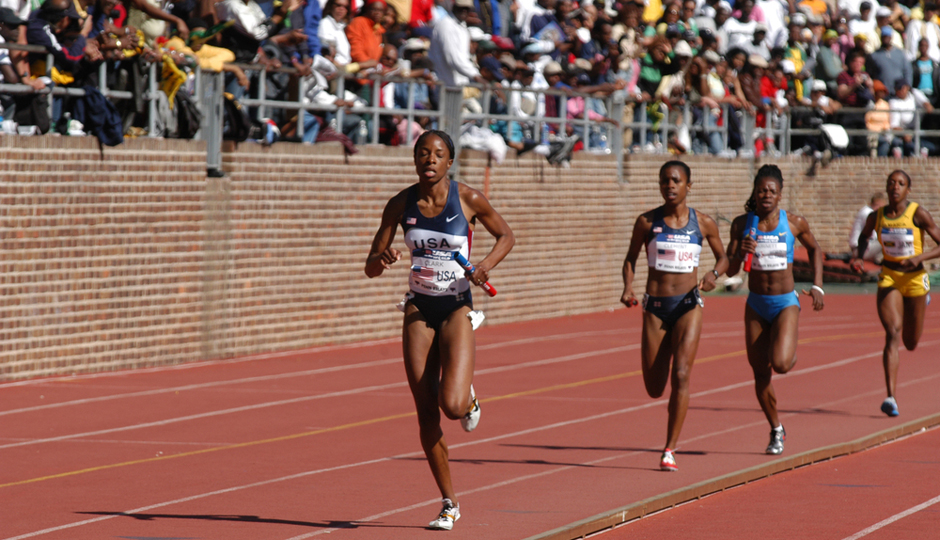A Viewer’s Guide to the 2017 Penn Relays

Penn Relays | Photo via Shutterstock
The Penn Relays kick off this week! And before we even get started, I have to say: sunscreen, people! Sunscreen!
Now that that’s out of the way, below you will find everything you need to know, from how to get there to where park to where to sit to what you’ll see.
The Schedule
Thursday, April 27th, 9 a.m. to 11:05 p.m.
Expect to see: high school girls, college women, nighttime men’s and women’s distance runs and field events.
Friday, April 28th, 9 a.m. to 7:40 p.m.
Expect to see: elementary and middle school boys and girls, high school boys and girls, college men and women, masters men and women, Special Olympics, Corporate Distance Medley and Olympic Development events.
Saturday, April 29th, 7 a.m. to 6 p.m.
Expect to see: high school boys and girls, college men and women, masters men and women, Olympic Development events and USA vs. the World races.
Check out a detailed schedule here.
The Events
The Penn Relays operate just like any other track-and-field event, but on a grander scale. It includes events that range from the men’s and women’s 100-meter dash to 10,000-meter distance runs. There are 4×100-meter relays, hurdles, as well as sprint and distance medleys. Sprint medleys have four athletes completing a race broken into four sections, one for each runner. Sections consist of a 400-meter leg, followed by two 200-meter legs, and it finishes with one 800-meter leg. The distance medley is very similar, except for the length. The distance medley consists of one 1200-meter leg, a 400-meter leg, an 800-meter leg, and finishes with a 1600-meter leg to wrap up the roughly 2.5-mile event.
The 18th edition of the USA vs. the World races kicks off on Saturday, bringing together elite track and field athletes from around the world. This of course means that the Saturday events garner much more attention, causing the tickets to do a long jump in price.
Expect to see field events including the pole vault, javelin, triple jump, shot put and discus throughout the three-day event, along with Olympic Development events. The Special Olympic athletes are competing in Friday and Saturday events.
How to Get There
All of the events take place at Franklin Field, located on 33rd Street between Walnut and South streets in University City (235 South 33rd Street). To avoid an annoying parking experience, it is HIGHLY suggested that you take SEPTA via bus, trolley or rail. You can take the trolley to 36th and Sansom Street or to 37th and Spruce Street, or take the Market-Frankford Line to 34th and Market Street. Franklin Field is about a 15-minute walk from 30th Street Station if you’re taking Regional Rail or Amtrak.
For a more complete list of directions, go here.
Where to Park
But, if you like living life on the edge and choose to drive, there are several parking facilities close to Franklin Field, along with metered street parking. The street parking is usually limited and there is a strictly enforced two- to three-hour limit, so your best bet might be one of the following parking garages or lots so you don’t have to keep running back and forth, adding money to your meter.
But do note, all of these Penn-affiliated parking garages will be charging a flat-rate of $25 for all those attending the Penn Relays, all weekend-long. These locations will most frequently feature credit card-only payment kiosks but, in some cases there will be some employees with cash for cash payments. Your best bet it to be prepared to pay with a card.
Penn Parking:
- 40th and Walnut Street
- 38th and Walnut Street (please use the 38th Street entrance)
- 34th and Chestnut Street
- 31st and Lower Walnut Street (Penn Park)
- South Street and Convention Avenue
Non-Penn Parking (and therefore no flat rate):
- Sheraton Hotel (36th and Chestnut Streets): $8 for the first hour, $2 for every additional hour.
Tickets
On Thursday and Friday, ticket prices range from $23 to $29, depending on where you sit. On Saturday, prices range from $45 to $75. There are discounted ticket package prices for those planning on attending all three days. Get your ticket here.
Where to Sit
The best place to sit depends on which event you want to see the most. Fans who want to catch the relay race finishes and the long jump events will want to make a reservation in the lower seating section on the north side of the stadium. If your interests lie in the sprint finishes and the pole vault, the lower seating section on the south side of the stadium will serve you best. For the best overall view of the competition, make sure to nab a seat in the lower stadium.
What to Eat
Spectators are permitted to bring food, sealed plastic water bottles and cardboard juice boxes packed in clear plastic bags. Remember: alcohol, coolers, glass bottles, and cans are prohibited. Right next to the stadium, the Carnival Village will be serving up food and refreshments, as well as selling Penn Relays merchandise and apparel. If you’re not feeling a pretzel-and-hot-dog diet, you can check out the Penn Relays Preferred Restaurants list here.
Security
The security at the Penn Relays is known to be strict, so make sure you know what you can and can’t bring into the stadium to avoid a long walk back to the car. Below we’ve outlined a few of the common items that are strictly prohibited. You can see the full list here.
- Backpacks, large bags (gym bags, duffle bags, etc.) and strollers are not permitted for spectators.
- Animals are prohibited, except for service dogs that aid guests with disabilities.
- Contraband is not permitted, such as weapons, umbrellas, poles, sticks and tripods.
- Metal or hard plastic seats with or without backs are prohibited.
- Smoking is not permitted in Franklin Field, per City of Philadelphia code.
A Brief History of the Penn Relays
What began as a rivalry between the Penn and Princeton track teams in the late 19th century has developed into one of the longest uninterrupted collegiate track and field events in the country. In 1893, the Penn University Track Committee developed the idea of a four-man relay in order to attract more attention for their spring handicap meet. Princeton’s track team contested Penn, where they won that year. Penn exacted revenge by defeating Princeton the following year in 1894. The first two years’ races were so popular, Penn decided to sponsor a relay (the Penn Relays) for the first time on April 21, 1895.
By this time colleges and high schools expressed enough interest for Penn to establish the Penn Relays as an annual event. There have been significant developments in the rules and events since the inaugural relay — like the inclusion of women athletes and significant renovations to Franklin Field – but the spirit of competition from the original 1895 relays remain intact.
Like what you’re reading? Stay in touch with Be Well Philly—here’s how:
- Like Be Well Philly on Facebook
- Follow Be Well Philly on Twitter
- Follow Be Well Philly on Instagram
- Follow Be Well Philly on Pinterest
- Get the Be Well Philly Newsletter


